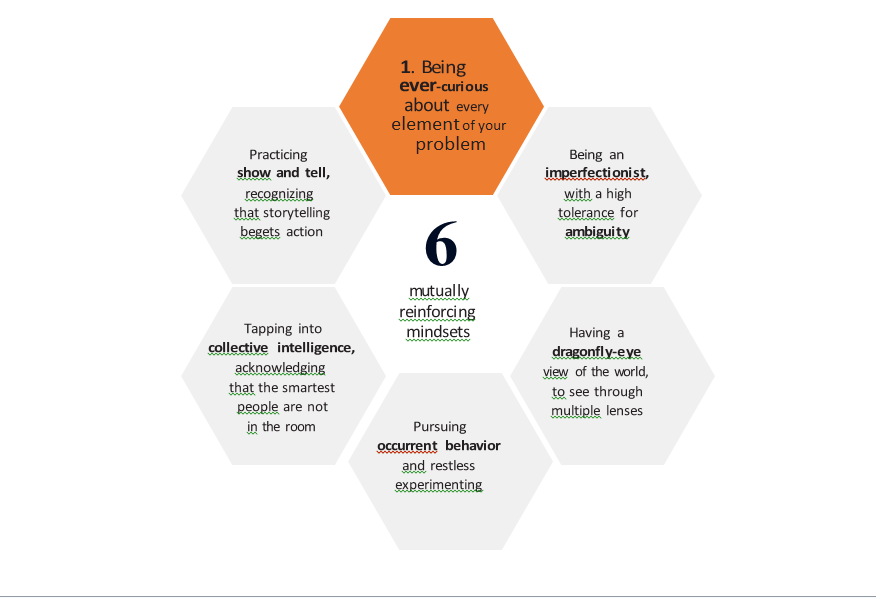
SIX PROBLEM-SOLVING MINDSETS FOR VERY UNCERTAIN TIMES
Even the most inscrutable problems have solutions— or better outcomes than have been reached so far. Here’s how the best problem solvers crack the code.
Great problem solvers are made, not born. That’s what we’ve found after decades of problem solving with leaders across business, nonprofit, and policy sectors. These leaders learn to adopt a particularly open and curious mindset, and adhere to a systematic process for cracking even the most inscrutable problems. They’re terrific problem solvers under any conditions. And when conditions of uncertainty are at their peak, they’re at their brilliant best.
Six mutually reinforcing approaches underly their success: (1) being ever-curious about every element of a problem; (2) being imperfectionists, with a high tolerance for ambiguity; (3) having a “dragonfly eye” view of the world, to see through multiple lenses; (4) pursuing occurrent behavior and experimenting relentlessly; (5) tapping into the collective intelligence, acknowledging that the smartest people are not in the room; and (6) practicing “show and tell,” because storytelling begets action. See figure below:
Here’s how they do it.
1. Be ever-curious
As any parent knows, four-year-olds are unceasing askers. Think of the never-ending “whys” that make little children so delightful—and relentless. For the very young, everything is new and wildly uncertain. But they’re on a mission of discovery, and they’re determined to figure things out. And they’re good at it! That high-energy inquisitiveness is why we have high shelves and childproof bottles.
When you face radical uncertainty, remember your four-year-old or channel the four-year-old within you. Relentlessly ask, “Why is this so?” Unfortunately, somewhere between preschool and the boardroom, we tend to stop asking.
Faced with an inscrutable problem? Try a more creative approach.

Our brains make sense of massive numbers of data points by imposing patterns that have worked for us and other humans in the past. That’s why a simple technique, worth employing at the beginning of problem solving, is simply to pause and ask why conditions or assumptions are so until you arrive at the root of the problem.
Natural human biases in decision making, including confirmation, availability, and anchoring biases, often cause us to shut down the range of solutions too early. Better— and more creative—solutions come from being curious about the broader range of potential answers.
One simple suggestion from author and economist Caroline Webb to generate more curiosity in team problem solving is to put a question mark behind your initial hypotheses or first-cut answers. This small artifice is surprisingly powerful: it tends to encourage multiple solution paths and puts the focus, correctly, on assembling evidence. We also like thesis/antithesis, or red team/blue team, sessions, in which you divide a group into opposing teams that argue against the early answers—typically, more traditional conclusions that are more likely to come from a conventional pattern. Why is this solution better? Why not that one? We’ve found that better results come from embracing uncertainty. Curiosity is the engine of creativity.
